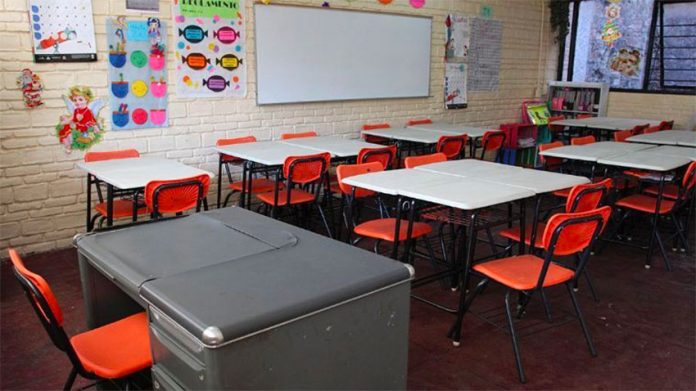Back in the middle of March, somewhat optimistically, the Mexican government conceded to closing the nation’s schools for a month as a preventative measure against the spread of Covid-19.
From where we are now, looking back on a fairly chaotic summer, we can more accurately label this decree as somewhat naive, with many schools still shut or only just beginning to open once again.
The restlessness of the government throughout the pandemic to get schools back up and running has been tangible, and it really is no surprise given the stakes at hand. Reopening workplaces without reopening schools eliminates the possibility of childcare for working parents, thus undermining millions of families in their efforts to get back out and provide for themselves.
Despite the risks involved with reopening places of congregation too early, it has always seemed to the government as though rebooting the education system is their golden ticket out of the pandemic.
It isn’t much of a surprise then that a new strategy for getting schools back up to function has been doing the rounds over the last few days, a product of extensive frameworking from Mexico’s Public Education Ministry. This outline describes a return to academic activities based on a new “hybrid educational model that will involve both remote education and in-class education.”
The ministry went on to insist that the specifics of each case will be left up to local authorities and will be based upon each state’s specific needs, but the overall framework would still apply nationwide.
The hybrid system that is proposed, while seemingly a radical advancement in the way teaching will be conducted, has already been means-tested sporadically throughout the pandemic. Ever since schools closed down, a strong emphasis has been placed on remote learning and ever more elaborate ways to extend the tools of learning to students within their homes. In many states, public TV has been showing educational programs, teachers have been conducting lessons in online video chats, and inter-pupil communication has taken advantage of various social media apps to share notes, advice, and learning resources.
Unfortunately, the problem with using a predominantly technological framework as the future basis of education under Covid is its inherent exclusivity. Access to adequate learning resources becomes contingent on various factors that all, at their root, come down to economic security.
Strong internet access is essential for large bandwidth group sessions while oftentimes particular learning software is only supported by recent computer models. This specific tech can be costly and if they don’t break the bank, they often bend it to the point of acute anxiety.
While the government may claim that anyone’s television can link up to educational programming, it is no secret that this medium barely scratches the surface of a rich and well-rounded curriculum. These programs, which now run around the clock on public service channels, were initially created as part of the telesecundaria program which aimed to support a teacher-led educational system but have now become the exclusive teaching input for thousands of families; understandably, this isn’t a level of education that will be sustainable in the long run.
So what is the solution? While it is difficult to completely fulfill everybody’s educational needs in a time of crisis, efforts need to be made to construct a sustainable schooling system that can cater to the needs of society’s poorest. Implementing powerful internet and preparing for a technological future can be a long-term goal, but more importantly, when it does become safe to open fully, schools need to ensure that they stay virus-free. This is the only way to serve immediately the children that lack the resources for remote learning.
The Ministry of Public Education has implemented guidelines for schools as to how to maintain an environment free of contamination and virus-breeding, but these need to be codified and enforced throughout the states. Ideas to “maximize the use of open space” and “ensure widespread access to water and soap” are welcome, but feel characteristically lax and simply advisory.
Stricter rules may in fact be necessary, such as a measure to close a school for 15 days if even a single case of Covid is detected among staff or students. This is currently a recommended measure, but still one that seems capable of preserving schools and educational hubs as locations free of potential outbreaks.
As is so often the case, and especially in the context of this pandemic, some preventative measures are simply not going far enough. Though the government is making a valiant effort to supply the educational needs of the nation by using the inevitable technological future as a framework, it seems that the solution in many ways comes down to reinforcing the distancing measures in place and taking the threat seriously on the journey back to normality.
This is the only way of ensuring that the very poorest in our educational system can continue to learn in safety, just like everyone else.
Jack Gooderidge writes from Campeche.
